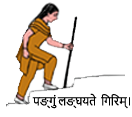Dhanwantari is Doctor of Gods and God of doctors.
Ayurveda (Knowledge of Life), India's ancient health care system, aims to promote health, prevent diseases, and restore life. An extensive survey indicated that Ayurveda is preferred by 18.7% of people for common ailments. 13.8% of cases attending Ayurveda dispensaries are those of arthritis. 28% of patients with rheumatoid arthritis use Ayurveda drugs. Department of AYUSH (Ministry of Health) aims to grow and develop Ayurveda and other Indian medical systems and integrate them into health care delivery. Indian Government is implementing good manufacturing practices in Ayurveda pharmacies. Central councils conduct and support various aspects of research in Ayurveda. Nowadays, there is increasing global interest in traditional systems of medicine. Moreover, there is an immense possibility of pharmacological research, given the rich biodiverse plants advocated by Ayurveda. Evidence-based practice can easily be implemented with more research and a scientific approach. Integrated functioning Ayurveda and modern medicine can then be practiced for health promotion and disease management.
Basic principles
The Universe is made up of 5 essential elements viz. Earth, Water, Fire, Air, and Space. The human body, too, is made up of mind and spirit in addition to these five elements. Vata, Pitta, and Kapha are the three vital biological forces (Dosha) governing every living body. Vata controls body movements and functions; Pitta controls biotransformation and metabolism, whereas Kapha manifests as the cohesiveness of body constituents. The imbalance of these Doshas leads to a disease state. The human body is constituted of 7 body tissues (Dhatu). Quantitative and qualitative optimization of these is desirable for the maintenance of health and longevity. Mala are waste products excreted out of the system.
Agni implies capacity for digestion (Jatharagni), metabolism (Bhootagni), and assimilation (Dhatwagni) of food substances. The process of biotransformation and transportation takes place in various body channels (Srotas). Hypofunctioning of Agni and derangement of Srotas are significant contributors in the development of a disease state. Aam, a toxic substance, is generated in the human body due to improper digestion and inadequate biotransformation of foods, inefficient clearance of waste products, and inadvertently ingested or formed nonfood substances. Aam can be correlated with antigen-antibody complexes responsible for many autoimmune rheumatic diseases.
Vata, the most critical Dosha, is responsible for pain in rheumatological and other conditions. The main sites of Vata activity are the pelvis, bones, thighs, ears, and skin. Vata increases due to various factors, including bitter, pungent, astringent, stale, stored foods, hectic lifestyle and frequent traveling, cool and dry climate, and advancing age.
Avoidance of causative and precipitating factors, forced expulsion of vitiated Dosha, drug therapy, modification of diet and behavior, and Rasayana (therapy for repair and rejuvenation) are essential constituents of Ayurveda therapy.

